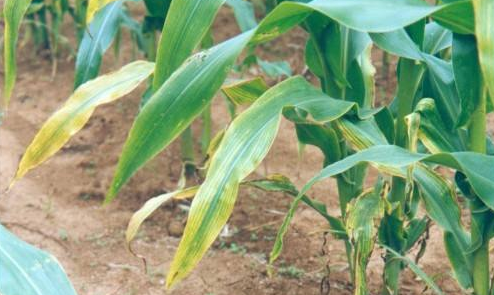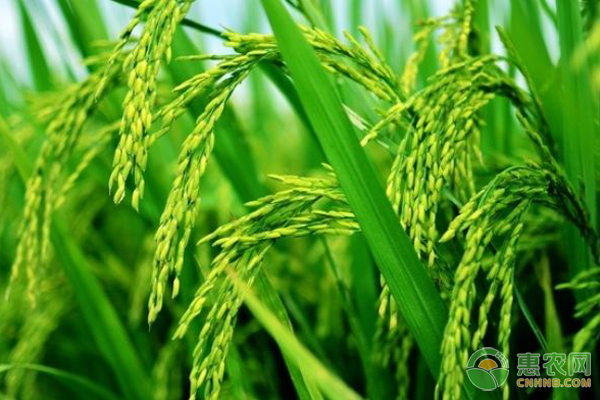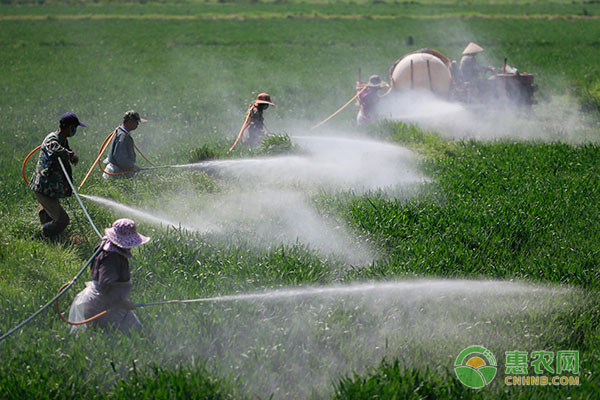Symptoms of fertilizer deficiency in crop corn and its correction techniques
Symptoms of nitrogen deficiency and their corrective techniques
Symptoms: corn needs a large amount of nitrogen, the growth and development of the main stem is slow and thin when nitrogen deficiency occurs, the color of tea is yellowish green, and the male heading is late; during the period of growth and maturity, the yellow leaves yellowed from the leaves along the midvein to the tip of the leaves, and the yellowing part is in the shape of "V". The leaf margin is still emerald green and curled slightly, and finally withered and died. Under the nitrogen deficiency standard, the protein in the lower yellow leaf decomposes and migrates to the part with abundant growth and development. As far as a single corn is concerned, the main symptom of nitrogen deficiency is that the yellow leaves turn yellow at first, and then slowly expand to the leaves.

Correction techniques: advocate the use of fertilizer, or topdressing before the 5-leaf stage to lift seedling fertilizer; after the big trumpet period, pay attention to appropriate topdressing and grain fertilizer.
2. Symptoms of phosphorus deficiency and corrective techniques
Symptoms: phosphorus deficiency in maize emergence, even if the supply and demand balance of phosphorus is abundant in the middle and later stage, it can not make up for the negative effects of phosphorus deficiency in the initial stage. When there was phosphorus deficiency in emergence, the growth and development of rhizome was poor, and the growth and development of maize seedlings was slow. After 5 leaves, there were significant symptoms of phosphorus deficiency, such as dark purple leaves, blue-purple leaves and curled leaf edges, which was due to the serious destruction of carbon metabolism during phosphorus deficiency, sugar accumulation in the leaves and the production of anthocyanins. However, such symptoms on leaves will also be caused by diseases and insect pests, freezing injury and waterlogging, so they need to be analyzed in all aspects. Phosphorus deficiency also slows the filament extraction rate, harms pollination, curls the ear, the ear row is uneven, the grain is not round, the baldness appears, and the delay time is improved.
Correction techniques: after finding the symptoms of phosphorus deficiency, one mu can be sprayed with 200 grams of potassium dihydrogen phosphate to 30 kilograms of water, or 1% phosphate fertilizer solution.
Symptoms of potassium deficiency and corrective techniques
Symptoms: when the corn is deficient in potassium, the rhizome is underdeveloped, the main stem is slow to grow, the color of tea is light green and has a light yellow pattern, when it is more serious, the leaf edge and leaf tip show blue-purple, then wither and burn, and the middle part of the leaf still maintains emerald green, but the leaf wrinkles slowly. This situation is mainly manifested in the lower yellow leaves, because potassium in the yellow leaves is the first to migrate to the new human organs when potassium is deficient. Potassium deficiency also makes the main stem weak, infectious source disease, easy to reverse, flower ear underdevelopment, baldness is more serious, less cassava starch in grains, seedling emergence rate is reduced, resulting in limited production.
Correction technology: corn is a potassium-loving crop, generally applying 10 kilograms of potassium chloride per mu as base fertilizer or seedling fusion fertilization. Leaves can also be sprayed with potassium dihydrogen phosphate aqueous solution, the use of 200 grams per mu of water 30 kilograms. It can also be used as special fertilizer for topdressing corn.
IV. Symptoms of calcium deficiency and corrective techniques
Symptoms: lack of calcium can cause plant cells to become sticky. The first is the stickiness of tooth root and root hair cells, which leads to the weakening of cell division ability and slow growth and development of somatic cells, and the bud eyes are black glue. The second is that the leaves cause collagen fibers, which causes the leaves to distort and stick together, and then the tip of the stem is large and has a tendency to cause branches.
Correction techniques: calcareous soil is generally not prone to calcium deficiency. If corn produces pathological calcium deficiency symptoms, 0.5% calcium chloride solution can be sprayed. The soil with strong acidity and low salinity can be applied with lime powder 50~70KG per mu, but it should not be mixed with ammonium nitrogen fertilizer or retting fertilizer.
Symptoms and corrective techniques of magnesium deficiency
Symptoms: during magnesium deficiency, light yellow patterns appeared on the edge or between petioles of corn yellow leaves, which developed from leaf base to leaves, and then developed into green spots, dark brown or atrophy, dark purple stems and petioles, and yellow-white young leaves.
Correction techniques: 50 kg of calcium magnesium phosphate fertilizer can be applied in magnesium deficient fields, and the symptoms of magnesium deficiency in corn growth period can be sprayed with 0.1%-0.2% magnesium sulfate solution in leaves.
VI. Symptoms of sulfur deficiency and corrective techniques
Symptoms: when the corn is deficient in sulfur, the main stem is short, similar to nitrogen deficiency, the leaves turn yellow, the lower leaves and stems are often bright red, and the grain is perfect and delayed.
Correction technology: compound fertilizers with sulfur content or fertilizers with sulfur content such as ammonium sulfate, potassium sulfate and zinc sulfate can be used. Symptoms of sulfur deficiency occurred in the growing period of corn, and 0.5% potassium thiocyanate solution was sprayed on the leaves.
Symptoms and corrective techniques of boron deficiency
Symptoms: the main symptoms of boron deficiency in corn are that the rhizome is not relatively developed; the main stem is short; the interveinal mechanism of the upper leaf becomes soft, showing a milky white all-transparent pattern; the leaf foundation is weak, whitening, and even withered; the bud eye is restrained, and the male ear cannot be drawn up; the male flower declines and shrinks; the flower ear declines and deforms, and the top grain is empty.
Correction technology: special fertilizer for topdressing corn. For the land with serious boron deficiency, 1 jin of boron sand can be used as base fertilizer per mu. The symptoms of boron deficiency occurred in the growing period of corn, which could be sprayed with 150 to 200 grams of boron per mu to 30 kilograms of water.
Symptoms of calcium deficiency and corrective techniques
Symptoms: when the corn is seriously deficient in calcium, it produces white seedlings. The young leaves of the newborn were light yellow or milky white, especially at the base of the leaves. In the second half of the period, the nodes decreased, the main stem became smaller, the root was grayish black, the growth and development was hindered, and the ear or flower ear was seriously bald, and even withered and died.
If there is a serious shortage of calcium in corn, it can be used 1 kilogram and 1.5 kilograms of zinc sulfate as base fertilizer per mu, or 1 kilogram of corn seeds can be mixed with 6 grams of zinc sulfate or soaked in 0.1% zinc sulfate solution of 0.3%. Or spray 30 kg of water leaves with 50 grams of 75 grams of zinc sulfate per mu.
Symptoms and corrective techniques of manganese deficiency
Symptoms: manganese is the activator of green plant body enzymes, which is related to the photosynthesis of corn, plant photosynthesis and the production of chlorophyll. The symptom of manganese deficiency in corn is a light green pattern along the petiole from the leaf to the tip, the young leaves turn yellow, the leaves are soft and loose, the stems are thin, the grains are not round, the order is uneven, and the roots are thin and long.
Correction techniques: soak seeds with 0.1%-0.3% manganese sulfate solution or 1 kg corn seeds with 10 grams of manganese sulfate or spray leaves with 0.5% manganese sulfate aqueous solution.
Symptoms and corrective techniques of copper deficiency
Symptoms: when the corn is copper deficient, the top and heart leaves turn yellow, the growth and development is blocked, the main stem is short and scattered, the chlorosis between petioles develops to the tip, the leaves lose green or atrophy seriously, and the flower ear is not large.
Correction technology: general special fertilizer for topdressing corn. For the fields with serious copper deficiency, 1.5 kilograms of copper sulfate per mu can be used as base fertilizer. Symptoms of copper deficiency occur in the growing period of corn, and 0.1%-0.15% silver nitrate solution can be sprayed per mu.
Symptoms and corrective techniques of zinc deficiency
Symptoms: iron is the component of chlorophyll, zinc deficiency is the first upper leaf chlorosis, and then to the middle and lower leaves development trend, leaves show yellow-green patterns, more serious petiole yellowing, leaf skin whitening.
Correction technology: it is appropriate to apply organic fertilizer. When topdressing corn shows symptoms of zinc deficiency, spray 0.3%-0.5% aluminum sulfate aqueous solution, or soak seeds with 0.02% aluminum sulfate aqueous solution.
Symptoms and corrective techniques of molybdenum deficiency
Symptoms: corn molybdenum deficiency is the first to show the symptoms of chlorosis or yellow spots on the yellow leaves, the leaf tip is easy to wither, and when it is more serious, the growth and development of the rhizome is inhibited, resulting in the death of the main stem on a large scale.
Correction technique: seeds can be soaked with 0.03% ammonium molybdate aqueous solution or 1 kg seeds can be mixed with 2-4 grams of ammonium molybdate. The leaves of corn with molybdenum deficiency can be sprayed with 0.05% ammonium molybdate aqueous solution.
Related
- The first cup of black tea in spring, the flavor and history of tea gardens in Kenya, Africa
- The computer can not only choose potatoes, but also grow tea rice. AI will grow winter oolong tea champion.
- It is not only the inflated tea bitten by insects, but also engraved with the four seasons tea in Beipu.
- The Oriental Beauty Tea Festival in Zhuxian County takes the stage at the weekend to experience the plus-size feast of oil tea.
- & quot; Oriental Beauty Tea & Exploration of Emei in Hsinchu, the hometown of quot;
- The new variety of strawberry "Tainong 1" dessert is the first choice with mellow aroma. Crimson gorgeous
- History of Tea in Taiwan: from Wild Inner Mountain to Export Tea Garden
- Two types of Taiwan Oriental Beauty Black Tea won the British three-Star Award for Childhood Tea Xiang Zhang Jiaqi changed from pilot to champion tea maker.
- Banana species and varieties: the planting history of Taiwan Xianren banana and dwarf banana is long, is banana disease resistant?
- Coffee planting Technology: Qianjie Coffee from Seedling to harvesting



